Refactoring a monolith into microservices can be overwhelming - but AI tools make it manageable. These tools analyze your code, identify service boundaries, suggest decomposition patterns, and even generate microservices. Here are the 7 best AI tools to simplify this process:
- IBM Monitor Micro: Analyzes legacy systems, identifies dependencies, and defines service boundaries for large-scale projects.
- vFunction: Provides architecture assessments and domain-driven decomposition for complex legacy systems.
- Metabob: Uses deep semantic analysis to optimize code quality and pinpoint service boundaries.
- OpenAI GPT-4: Assists with code review, documentation, and planning microservices architecture.
- GitHub Copilot: Offers real-time, context-aware code suggestions for everyday development tasks.
- Sourcegraph Cody: Maps dependencies, supports semantic code navigation, and identifies microservice boundaries.
- AI Code Frameworks: End-to-end solutions for automated code analysis, recommendations, and transformation.
Quick Comparison
| Tool Name | Key Focus | Capabilities | Best For |
|---|---|---|---|
| IBM Monitor Micro | Legacy System Analysis | System insights, code analysis | Large-scale refactoring |
| vFunction | Architecture Assessment | AI-driven architecture evaluation | Complex legacy systems |
| Metabob | Code Quality Optimization | Static analysis, improvement tips | Enhancing code quality |
| OpenAI GPT-4 | Code Generation & Assistance | Language-based code translation | Rapid prototyping |
| GitHub Copilot | Real-Time Code Assistance | Context-aware code suggestions | Everyday development tasks |
| Sourcegraph Cody | Code Navigation & Analysis | Semantic search, navigation | Managing large projects |
| AI Code Frameworks | End-to-End Refactoring | Integrated analysis, transformation | Complete refactoring solutions |
Start small: test these tools on a non-critical component of your monolith. Gradually scale up and combine tools for the best results. AI tools save time, reduce risks, and make the transition to microservices smoother.
Let's Code: IBM Mono2Micro - Using AI to refactor Java ...
1. IBM Monitor Micro
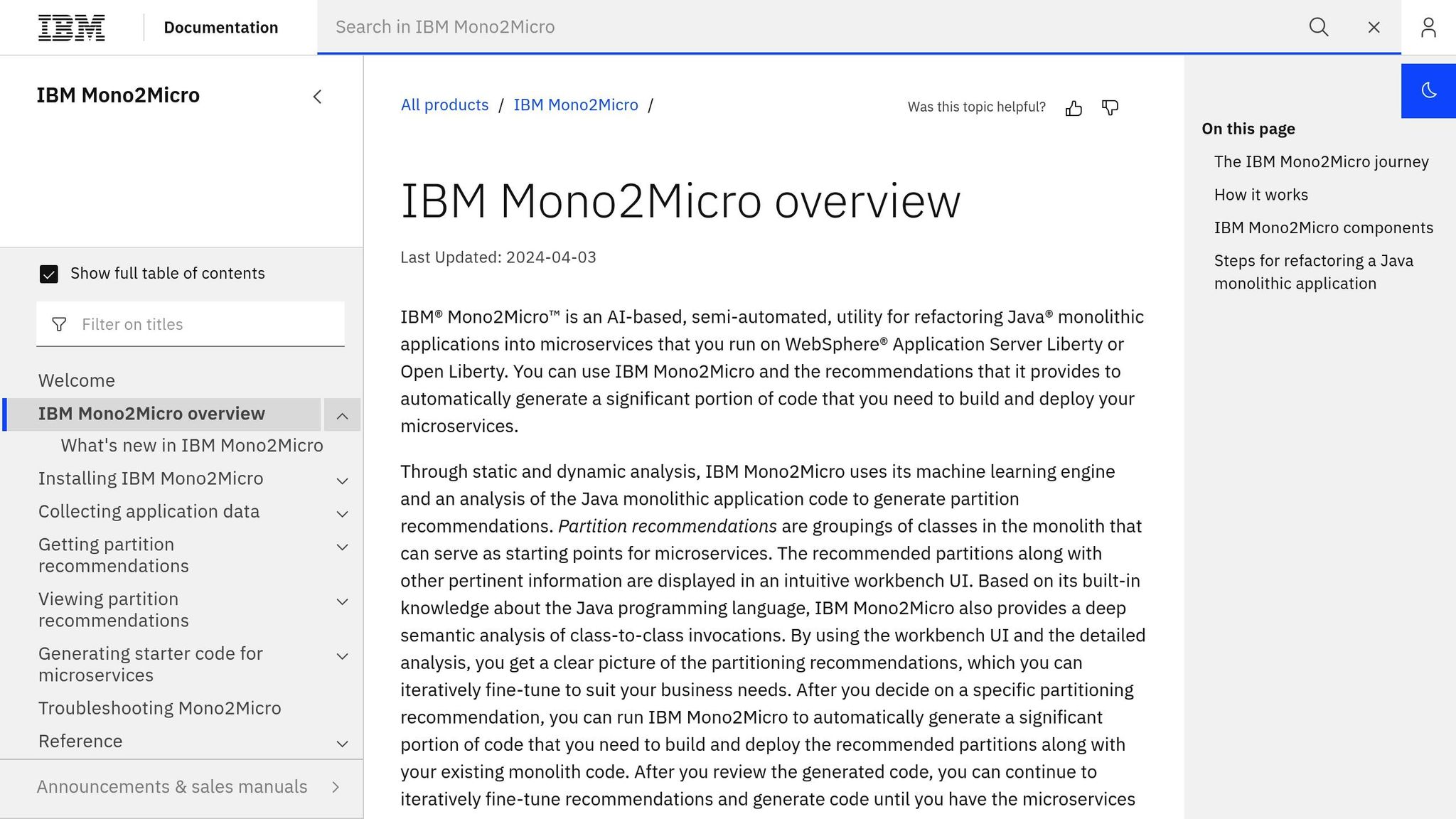
IBM Monitor Micro is designed to analyze monolithic applications, identifying dependencies and defining service boundaries. It uses advanced AI algorithms to automate the process of extracting microservices. This focused analysis helps simplify the often-complicated transition to microservices, making modernization quicker and more efficient. As discussed earlier in the context of automated refactoring, this tool serves as a practical example of simplifying modernization efforts.
2. vFunction
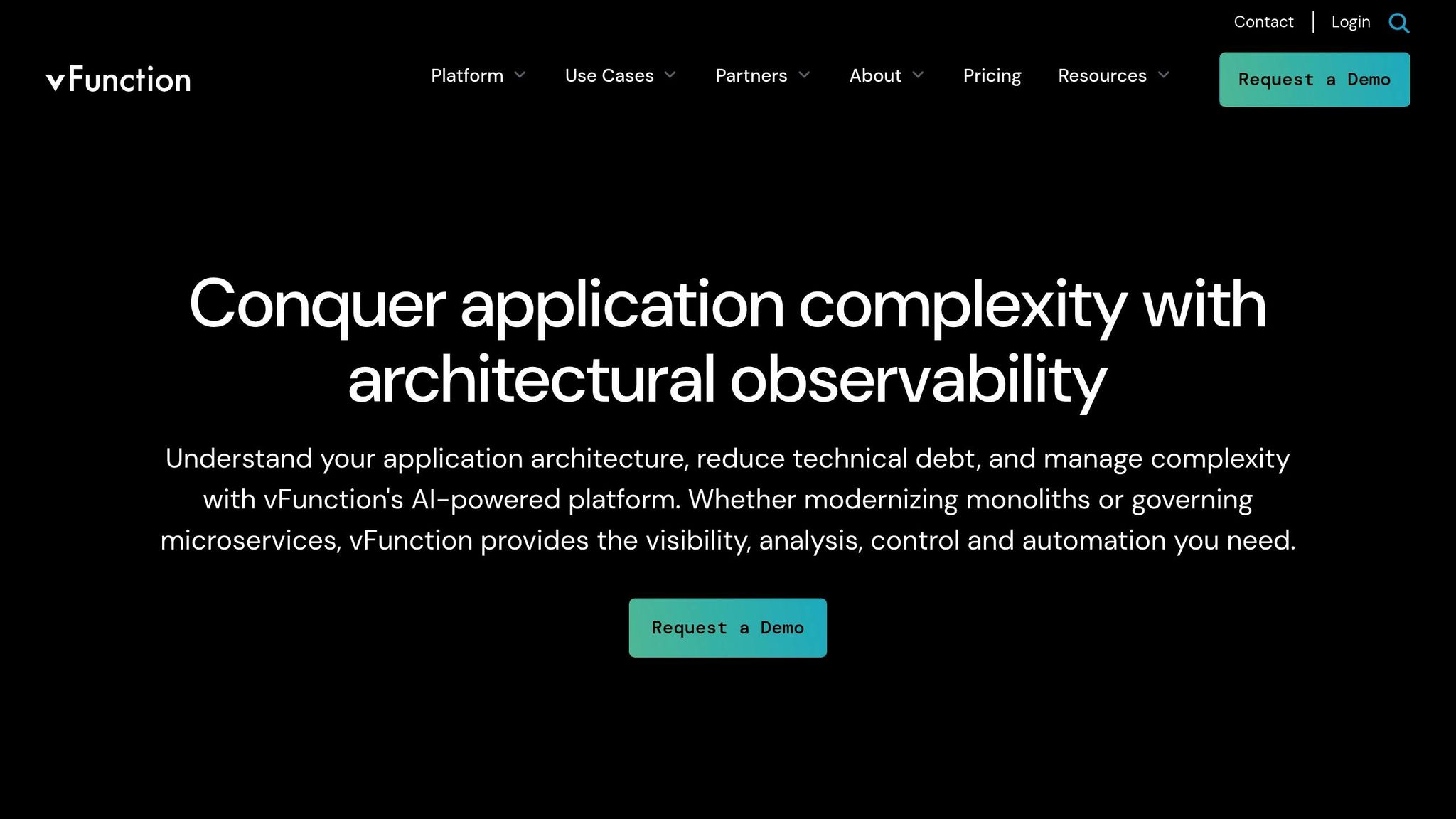
vFunction provides a tool designed to simplify the process of breaking down complex monolithic applications. By using AI, it analyzes the architecture, data flows, and dependencies of these applications to identify opportunities for refactoring into microservices. Its assessment engine creates a detailed modernization plan, while its domain-driven decomposition feature pinpoints service boundaries within older codebases. This approach helps make modernization projects more efficient.
3. Metabob
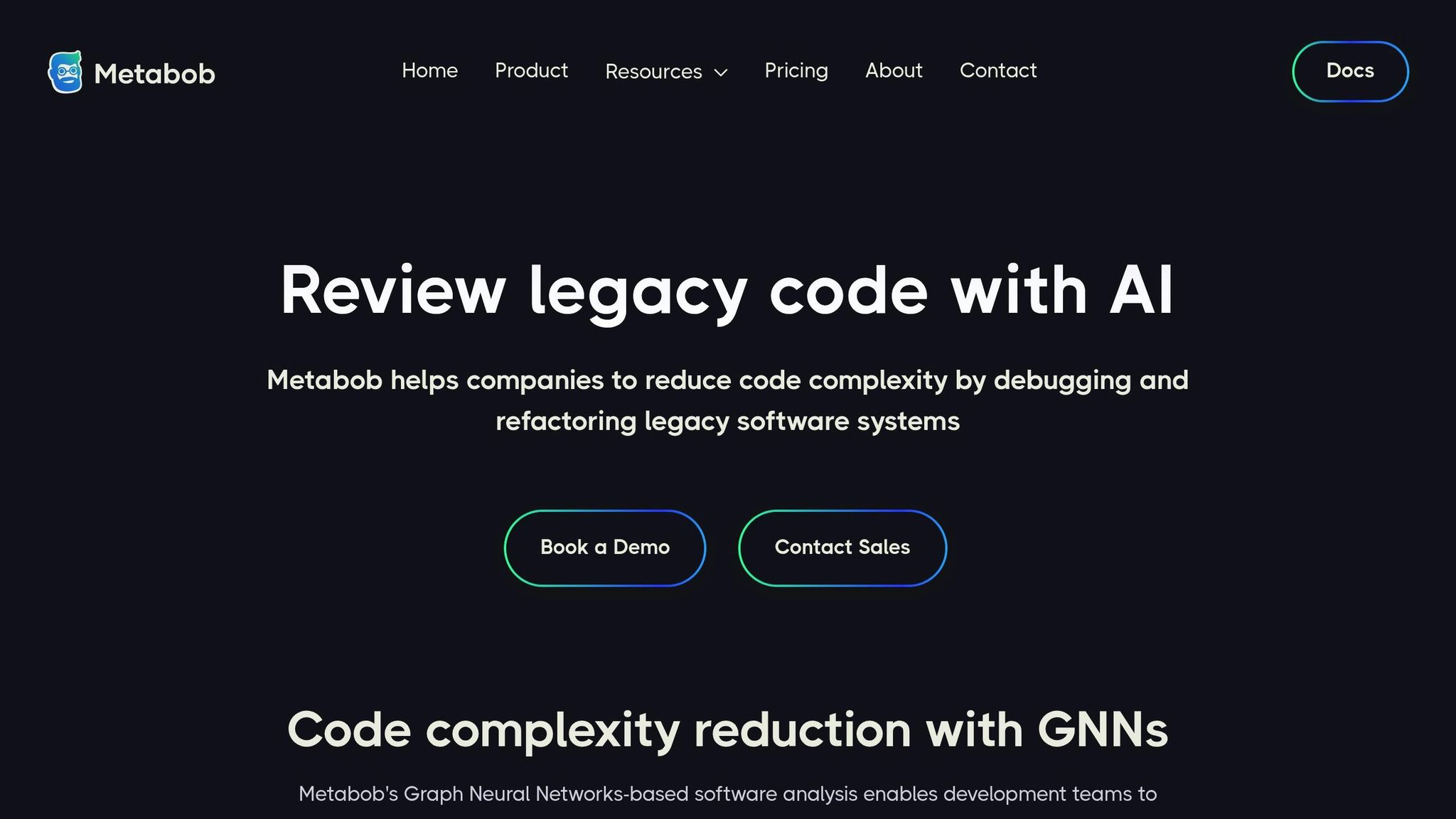
Metabob takes legacy code transformation to the next level with its advanced analysis capabilities. Using AI algorithms, it breaks down monolithic codebases into microservices architectures. What sets it apart is its focus on deep semantic analysis, going beyond basic syntax to uncover complex relationships and dependencies within legacy systems.
This tool analyzes code patterns, data flows, and business logic to pinpoint where natural service boundaries exist. It uses machine learning models to evaluate factors like function cohesion, coupling, data access, API usage, alignment with business domains, and overall code complexity. This helps identify candidates for microservices with a high degree of precision.
Metabob's interactive refactoring approach is another standout feature. It provides multiple decomposition options and includes detailed impact analysis. This allows development teams to weigh decisions about service independence, data consistency, performance, and deployment complexity with confidence.
On top of that, Metabob offers a dependency visualization engine. This tool maps out code relationships and supports step-by-step refactoring by automatically generating interface contracts and flagging potential breaking changes.
4. OpenAI GPT-4
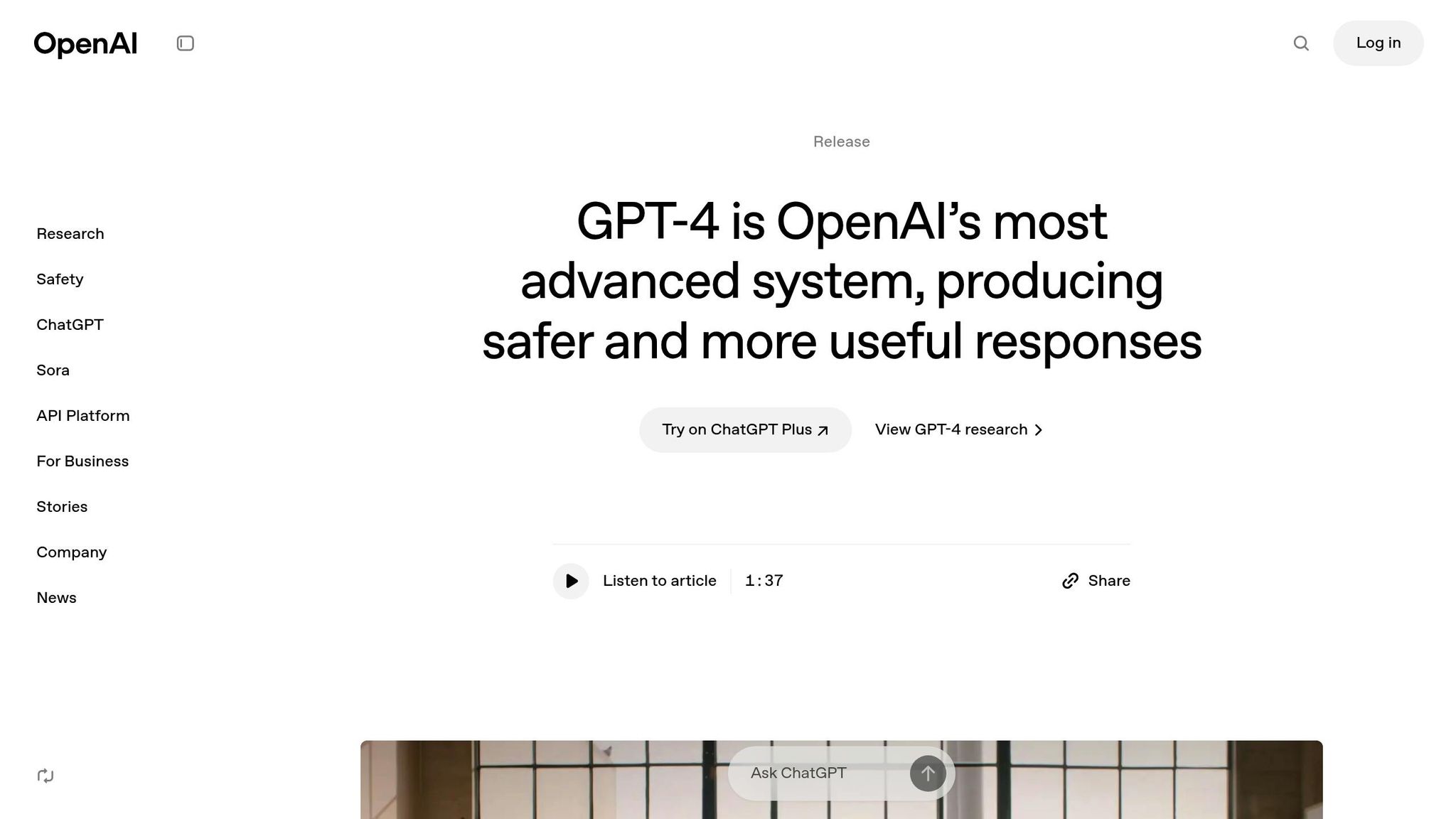
OpenAI's GPT-4 offers advanced reasoning capabilities and supports multiple input types, making it a helpful tool for transitioning from monolithic systems to microservices. It can review code to identify areas that need refactoring, create detailed documentation, and assist in planning microservices architectures. Its ability to handle varied inputs adds depth to design analysis.
The model's multimodal capabilities help clarify complex system designs. When paired with development tools, GPT-4 acts as a reliable assistant to streamline specific refactoring tasks. However, it’s best used as a support tool, with experienced developers making the final architectural choices.
sbb-itb-2e73e88
5. GitHub Copilot
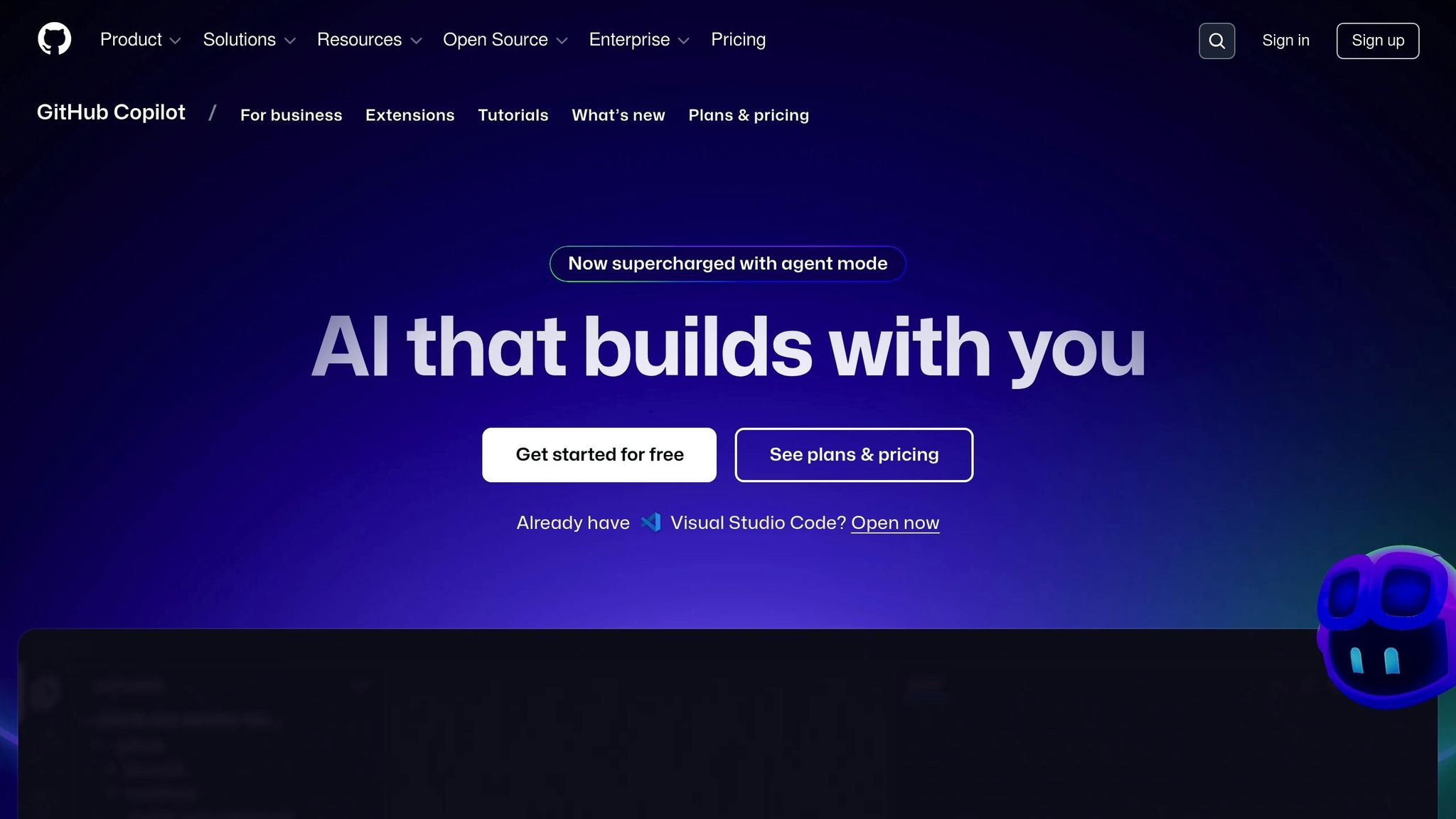
GitHub Copilot provides AI-driven code suggestions directly within your IDE, helping developers break down large monolithic codebases into microservices more efficiently. It offers real-time code snippets and function recommendations, streamlining the transformation of complex systems into smaller, modular services.
Copilot works smoothly with popular development environments, offering context-aware completions that can simplify repetitive coding tasks. Here are some of its key features that support microservices refactoring:
| Feature | How It Helps with Microservices Refactoring |
|---|---|
| Real-Time Code Completion | Suggests code snippets instantly, speeding up component development. |
| IDE Integration | Allows for a smooth workflow within your usual development tools. |
While Copilot is a powerful tool, successful refactoring still depends on thoughtful planning and developer expertise.
6. Sourcegraph Cody
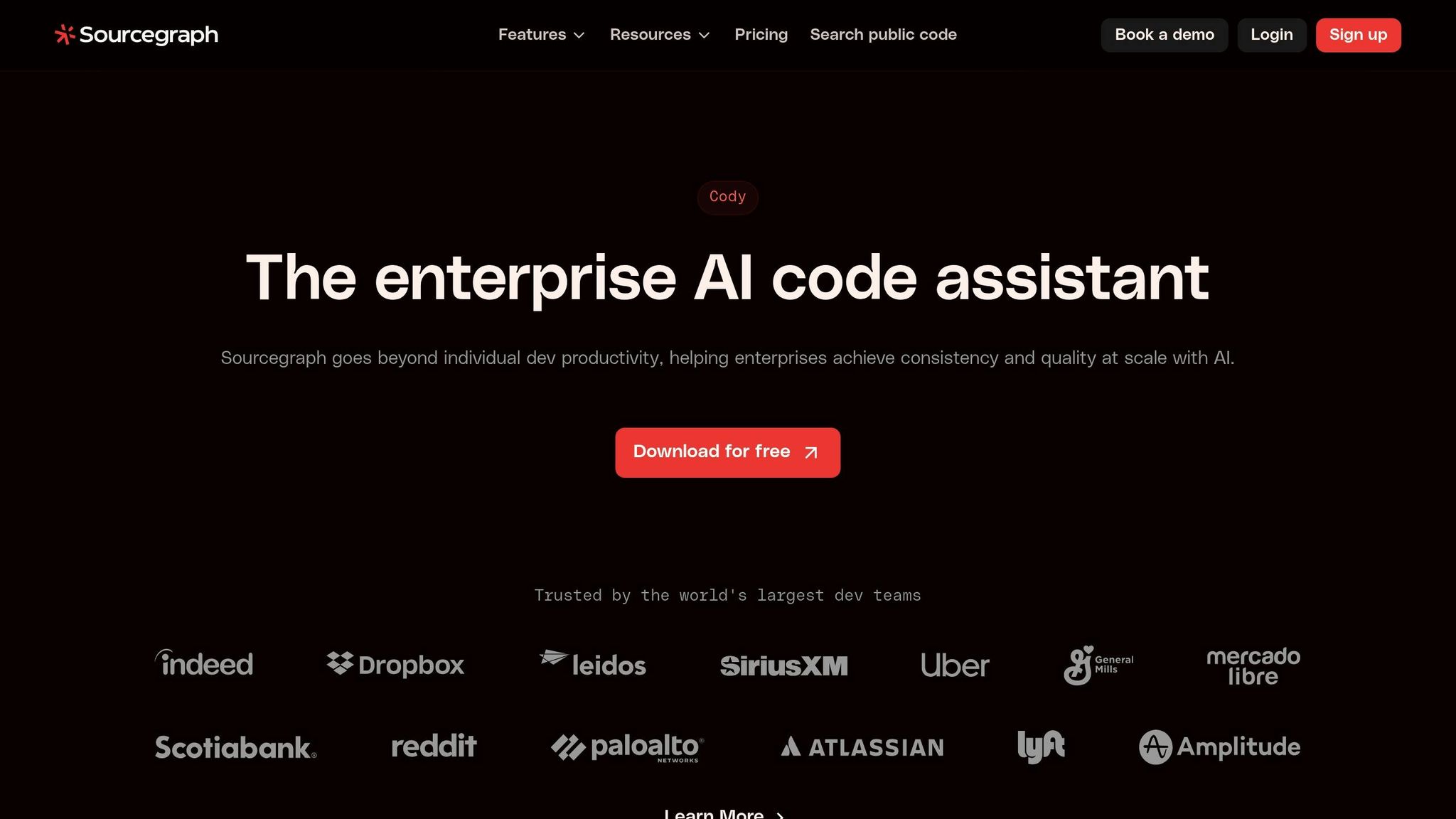
Sourcegraph Cody is a tool built to simplify the process of breaking down monoliths into microservices. It speeds up this transition by automating key tasks through advanced code analysis techniques.
Using semantic analysis, Cody helps identify precise boundaries within your code, making it easier for developers to decide how to separate services.
Key Features of Cody for Microservices Refactoring
| Feature | How It Helps |
|---|---|
| Code Graph Analysis | Maps out dependencies and relationships between code components |
| Multi-Repository Search | Tracks service connections across multiple codebases |
| Natural Language Queries | Lets developers explore complex codebases by asking plain English questions |
| Context-Aware Suggestions | Recommends service separation strategies based on code patterns |
Cody also improves code understanding with intuitive navigation tools. By exposing the structure and connections within your code, it makes even undocumented legacy code easier to work with.
How Cody Identifies Microservice Boundaries
Cody analyzes your code using factors like:
- Function call patterns
- Data access behaviors
- Alignment with business domains
- Metrics on how tightly services are coupled
This approach helps pinpoint where one service should end and another should begin.
Additionally, Cody's cross-repository awareness ensures consistency across all newly created microservices. Its ability to provide insights across repositories makes integrating these changes into your workflow much smoother.
Cody works seamlessly with existing workflows and version control systems. Its real-time analysis helps teams maintain a consistent architecture while transitioning from a monolith to microservices.
7. AI Code Frameworks
AI code frameworks use large language models (LLMs) to transform old monolithic systems into microservices. Here’s a breakdown of their key features and how they help with refactoring.
Key Features of Popular Frameworks
| Feature | Description | Role in Refactoring |
|---|---|---|
| Code Refactoring Help | Analyzes code with LLMs and suggests improvements | Identifies parts of the monolith to split into modules |
| Automated Suggestions | Uses advanced algorithms for code modification ideas | Speeds up repetitive tasks and boosts efficiency |
| Tool Integration | Works with existing development tools seamlessly | Eases the shift to microservices |
These features make the refactoring process smoother and more efficient, especially when paired with integration benefits.
Integration Benefits of AI Frameworks
-
Automated Code Analysis
Scans your codebase to find areas suitable for refactoring. -
Tailored Recommendations
Provides suggestions that match the specific structure of your code. -
Support for Code Generation
Helps create necessary components to speed up modernization efforts.
Tips for Using AI Frameworks Effectively
- Begin with a small, manageable section of your monolith to test the process.
- Cross-check AI-generated recommendations to ensure they align with business needs.
- Stick to consistent coding standards across all new services.
- Track performance metrics during and after the migration to ensure success.
While these frameworks can save time and effort, combining them with expert guidance ensures a more reliable and efficient refactoring process.
Tools at a Glance
Here's a quick comparison of each tool, highlighting their primary focus and best use cases.
| Tool Name | Key Focus | Capabilities | Best For |
|---|---|---|---|
| IBM Monitor Micro | Legacy System Analysis | System insights, code analysis | Large-scale refactoring projects |
| vFunction | Architecture Assessment | AI-driven architecture evaluation | Complex legacy systems |
| Metabob | Code Quality Optimization | Static analysis, improvement tips | Enhancing code quality |
| OpenAI GPT-4 | Code Generation & Assistance | Language-based code translation | Rapid prototyping |
| GitHub Copilot | Real-Time Code Assistance | Context-aware code suggestions | Everyday development tasks |
| Sourcegraph Cody | Code Navigation & Analysis | Semantic search, navigation | Managing large projects |
| AI Code Frameworks | End-to-End Refactoring | Integrated analysis, transformation | Complete refactoring solutions |
This table offers a snapshot to help you quickly match tools to your needs.
Selection Criteria
When choosing a tool, consider factors like:
- Project size and complexity
- Your team's expertise
- Available budget
- How well the tool fits into your workflow
Tool Combinations
For better results, consider combining tools that complement each other. For instance, use a code assistance tool alongside a system analysis tool to streamline and simplify your refactoring process.
Next Steps
Follow these steps to start using AI tools in your workflow effectively.
Start with an Assessment
Evaluate your current monolith by documenting its size, complexity, dependencies, and key business logic. This will give you a clear picture of what you're working with.
Create a Proof of Concept
Choose a small, non-critical component to test the refactoring process. This helps you gauge the tool's performance and suitability before diving into larger tasks.
Integration Strategy
- Ensure your development environment is compatible with the tools you plan to use.
- Dedicate time to train your team on these new tools.
- Set measurable KPIs to track the success of your refactoring efforts.
Once these steps are complete, you can move forward with a phased implementation.
Phased Implementation
- Initial Setup: Begin with tools like GitHub Copilot or GPT-4 for smaller, contained tasks. This helps your team get comfortable while delivering quick wins.
- Scale Up: Gradually incorporate tools like vFunction or IBM Monitor Micro for more extensive system analysis and planning.
- Full Integration: Deploy comprehensive solutions, such as AI Code Frameworks, for large-scale, automated transformations.
Make it a habit to review progress regularly. Combine AI assistance with expert oversight to ensure quality remains high.
For more detailed advice on choosing and using AI tools, check out AI Chat List. It’s packed with practical insights on various AI-powered development tools and how to apply them effectively.


